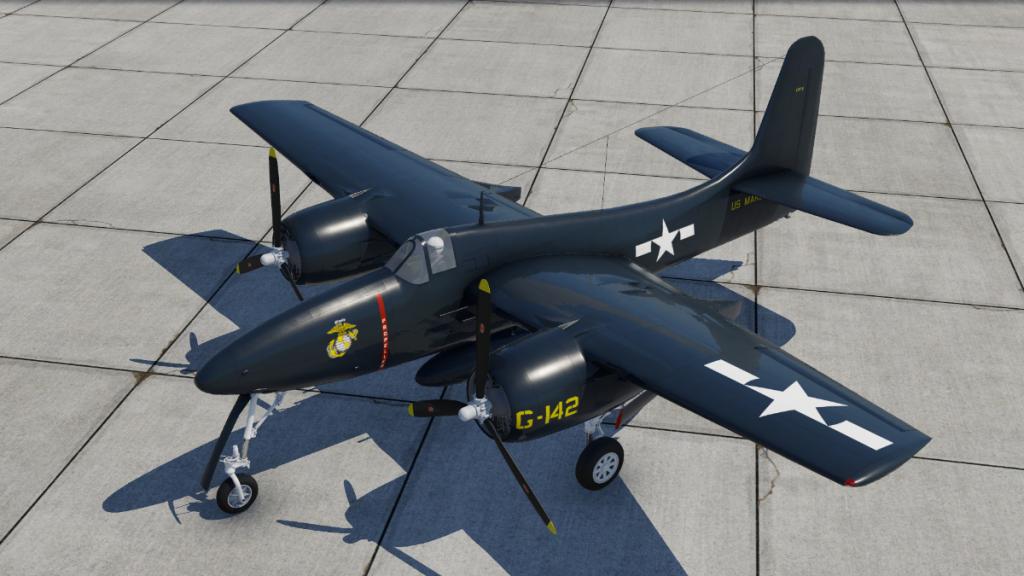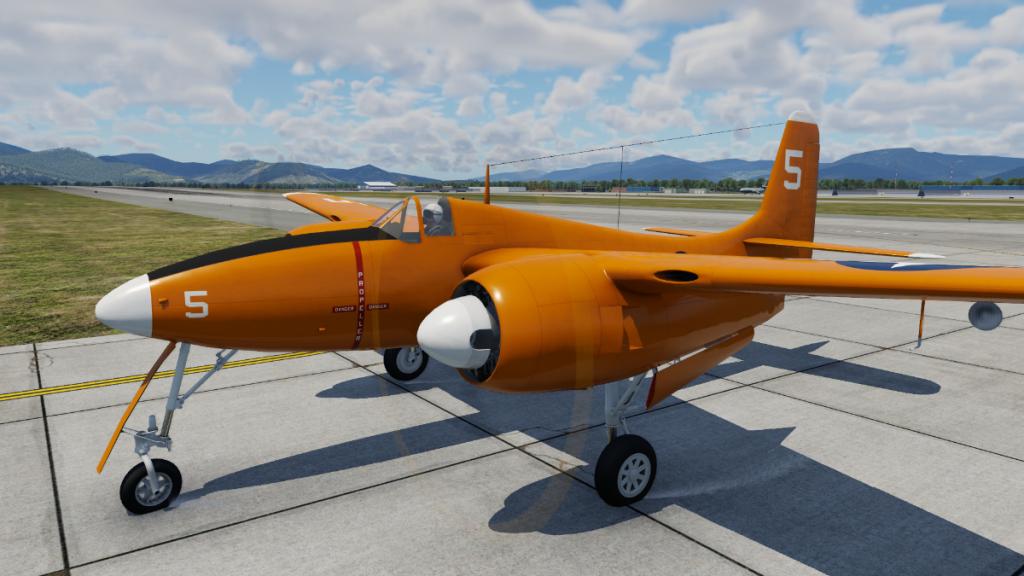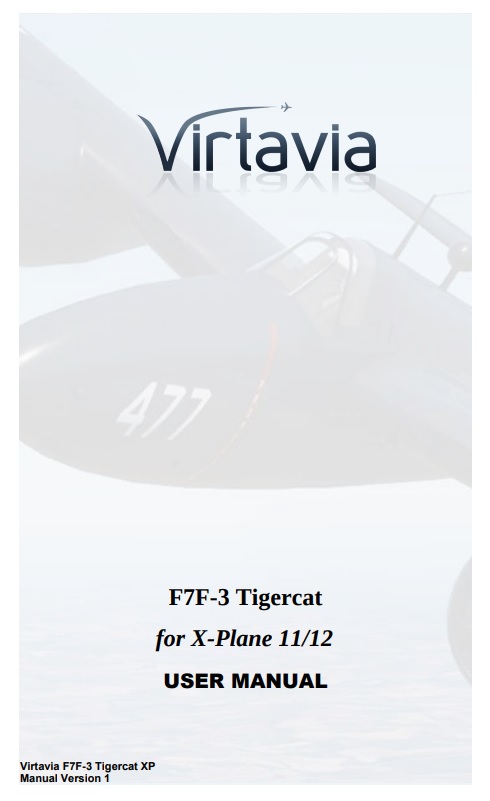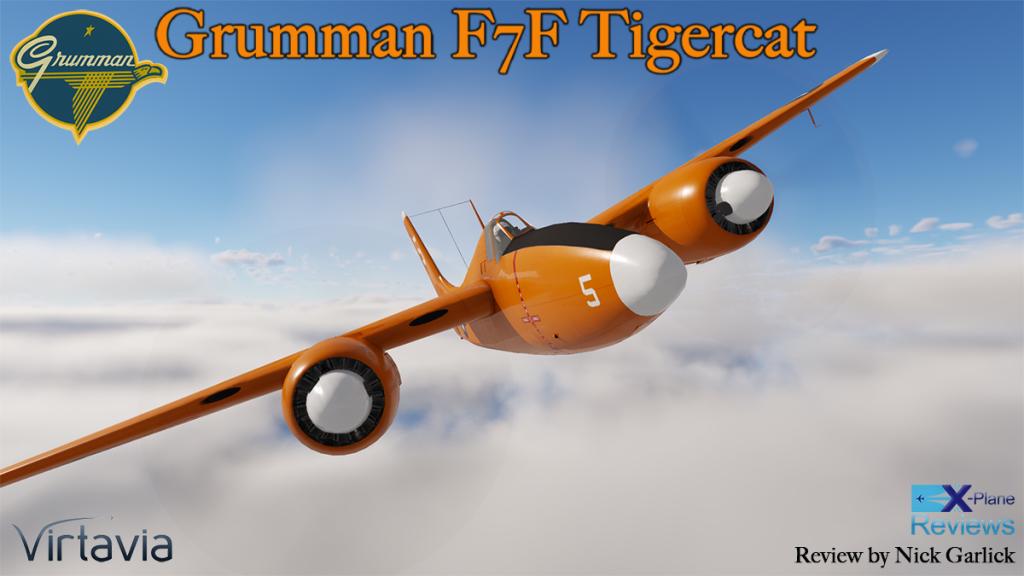Leaderboard
Popular Content
Showing content with the highest reputation on 03/01/23 in all areas
-

Aircraft Review: Grumman F7F Tigercat by Virtavia
Kiwiflyer reacted to Dominic Smith for a topic
Aircraft Review: Grumman F7F Tigercat by Virtavia By Nick Garlick Introduction Today I am pleased to share my thoughts on a classic warbird from the late 1940s, the Grumman F7 Tigercat from Virtavia, perhaps one of the least well-known of the "Grumman felines”. Designed and conceived in the latter stages of World War 2, the Grumman Aircraft Company delivered the F7F Tigercat in response to a request from the United States Navy for a fast well-armed convoy fighter. Grumman’s Tigercat would eventually go on to serve with both the United States Navy (USN) and the United States Marine Corps (USMC) until 1954. The Tigercat had a range of approximately 1200 miles, with a service ceiling of 40,400 feet. Fitted with two Pratt & Whitney R-2800-34W Double Wasp engines, they delivered a rate of climb of around 4,530 ft/min, with a top speed of approximately 460mph. This made the Tigercat one of the fastest piston-engine fighters of the day, flying faster than many of its siblings, including the F4 Wildcat and F6 Hellcat. The Tigercat was not only fast, but it was also heavily armed, as located in the wings were four x 20mm cannons, along with 4 x 50 calibre machine guns in the nose. The aircraft also featured numerous hard points for carrying ordnance, such as fuel tanks, rockets, and bombs. Altogether, that gave the Tigercat some real bite. Featuring a wingspan of just over 51 ft, a length of over 45ft, and a height of 16ft, these were (unquestionably) large for a fighter at the time. Unfortunately, this fact would lead the USN to determine that the Tigercat was unsuitable for use on carriers. After leaving active service, a few of the remaining Tigercats would go on to serve as "water bombers" to fight wildfires. Eventually, though, even these were finally deemed too old and were retired in the late 1980s. As of today, very few remaining airframes are to be seen and even fewer are left in flying condition. Happily, none of that matters in the X-Plane world, thanks to Virtavia. Installation & Documentation Virtavia’s package includes versions for both X-Plane 12 and X-Plane 11, which is a major plus point, as many X-Plane users still prefer the stability of the older platform. After purchasing the Virtavia Tigercat, simply extract and place the relevant files into your respective X-Plane Aircraft folder. Once installed, the size expands to 141 MB. The package includes a comprehensive 25-page full-colour PDF manual split into several sections. These include a comprehensive history of the aircraft, detailed instructions on how to operate the Tigercat, plus procedural lists. Tigercat Exterior The exterior model faithfully captures the lines synonymous with the Tigercat's profile; from the shark-like nose to the sweeping tapered rear fuselage, it’s all presented in wonderful detail. PBR textures are used throughout the model and when observed in conjunction with the new lighting effects in X-Plane 12, or even in X-Plane 11 for that matter, the whole model just shines. The oil cooling grills, cowl flaps, cockpit canopy, and access ladder, can all be opened and closed by clicking on the relevant controls in the cockpit, or by the necessary keyboard commands. Virtavia’s model features a faithful rendition of the real aircraft’s rather ungainly tricycle undercarriage layout, unique at the time for a fighter. This area is further enhanced with smooth and accurate animations of the gear, along with the closing and opening of the bay doors. Unlike some aircraft I have used on different platforms, the undercarriage and wheel bays are not excessively modelled, but there is enough detail included to satisfy most people. Variants & Liveries In terms of the included variants, they are: Clean - no external stores, Ferry - carries three drop tanks, Fighter - carries one belly drop tank, and Rocket - carries one belly drop tank and eight underwing unguided rockets. For each, you have the following liveries: Anacostia 477, 80405 VMF-312, La Tigresa, Black Cat, and lastly the fictional White 5. Tigercat Interior As with their earlier Hadley Page Hampden model, it’s clear to see that Virtavia have taken a lot of care when modelling the interior. When sitting inside the Tigercat’s cockpit, you will find yourself seated in a rich and diverse environment with both texturing and modelling being of the highest order. Although the cockpit is rather lacking in terms of weathering, I still found that it offered a highly authentic experience. The numerous gauges are clear and easy to read, and the abundant switches and levers which surround you, are easily accessed. All in all, I found Virtavia’s representation of the Tigercat’s cockpit, to be one of the best I had experienced in a simulator. Tigercat Handling Takeoff The Tigercat is wonderfully overpowered, but if you don’t respect that aspect of the aircraft, you can find yourself in trouble rather quickly. As per the Grumman Pilot’s Handbook, set all the trims to zero, select your desired flap setting and make sure you’ve turned on the rudder booster. If you forget the rudder booster, you’ll soon be reminded once airborne, as the Tigercat will have you dancing on the rudder pedals to counteract the Dutch roll effect. Line up for takeoff and advance the throttles to forty inches of manifold pressure, then let the power stabilize. You can stand on the brakes as you advance the throttles, or you can perform a rolling takeoff. If you’re at lighter gross weight, you can leave the throttles there, but for heavier weights, you should of course use more power if your runway length demands it. All things being equal, the Tigercat should become airborne at around ninety knots, and will accelerate fairly quickly. Raise the gear and close the canopy (limit speed is 140 knots), if you’ve performed the takeoff with the hood open as per the pilot’s manual. With this done, accelerate above 120 knots, as this is the minimum safe control speed for single-engine emergencies, and then…climb away! Cruise One of the nicest aspects of sim flying is that the fuel is always free, and you don’t have to worry about engine overhaul costs! If performance is your vice, then set your throttles at around forty-five inches of manifold pressure and bring the propeller levers back to 2400 rpm, and you’ll find that you’ll shoot along at a rather comfortable pace. If on the other hand you’d prefer to take in the sights; bring the prop levers back to 2200 rpm, the throttles to your desired setting, then sit back and enjoy the rumble of those two Pratt & Whitney R-2800s. Landing The Tigercat is an exceptionally clean airframe – have a look from head-on and you’ll see what I mean, not a lot of frontal area - and as such, will maintain its airspeed. Descent and approach planning is a bit on the “necessary” if you aren’t into performing an overhead-break manoeuvre in which to land. From altitude, throttle back as desired to maintain your speed; alternately keep the throttles up and come down like a bat out of hell! If you do that though, your airspeed will build up quickly and you’ll have to shallow your descent rate to prevent exceeding your Vne speed. Until you’ve applied a bit of flap and extended the landing gear, don’t count on slowing down while trying to enter the landing pattern. Get the flaps and gear extended first, then make your approach. I highly recommend maintaining an approach speed of 120 knots on final until you’re below 1000 feet above the airfield elevation, as this will protect yourself in the event of an engine failure (not a problem in the flight sim universe, unless of course, you enjoy the challenge of practising emergencies). Bleed the speed back to around one hundred knots, or lower if you’ve set full flaps, and then…touchdown! Sounds The FMOD sound samples included in the package are outstanding as they capture the dynamic sound of the two Wasp radial engines perfectly. From a cold and dark start, the engines come to life with a slow whistling wine before they suddenly spit, pop, and then rattle into life. When opening and closing the cockpit canopy (again nicely sampled), the sounds of the engine are subtly muffled, but still audible through the canopy. Other sounds include the numerous switches, plus various other squeaks, and groans of the aircraft. It’s truly amazing what you can do with FMOD soundsets, and Virtavia seem to have the technique down to a tee! Conclusion The Tigercat derives from a time when fighters were much simpler to operate and fly than their modern 5th and 6th generation counterparts. As such, this is not a particularly complex aircraft in which to fly, which suits casual flight simmers such as myself. That said, don't forget a tiger is a wild animal, and Virtavia’s Tigercat is not without its own vices, as you will find out if you happen to purchase it. As I said previously, you need to make sure you are always ahead of the aircraft, because if you’re not, then be prepared for a bite. Visually, the model faithfully captures the lines of the original aircraft, with some very nicely stressed skin effects. When these are observed from certain angles under the right lighting conditions, the model really does shine. However, finer details such as slightly raised panels and flush riveting, are for the moment, missing. With that said, the lack of such detailing (and I could be accused of being fussy), does not detract from an overall visually impressive exterior. As for what I would like to see improved on in future updates, I would have to say some cockpit weathering would be number one on my list, whilst externally, slightly more attention to the finer details on the external skin, again employing a degree of subtle weathering on the fuselage, which was a nice feature on the Hampden. In my opinion and without question, Virtavia have fundamentally nailed this product in terms of quality and its intended audience. The icing on the cake would have been a rendition of the two-seat and radar-equipped versions, but perhaps those variants are yet to come (hoping). They say a cat has nine lives, so here are nine reasons why I think you should consider adding Virtavia’s Tigercat’s to your hangar: The excellent price The inclusion of versions for both XP12 and XP11 in one single package VR compatible (according to the developer press release) The inclusion of a comprehensive PDF manual A rich and diverse cockpit environment, which is in a class of its own The inclusion of an impressive FMOD sound pack The different load-out options. Rain and ice effects on the canopy (XP12 only) The level of functionality Finally, whilst summing up, I came across a post by X-Plane org member "Eldo", who posted a couple of nice screenshots in the "What did you fly today" section on the Org portal. Whilst turning and burning over Duluth / Superior Harbour in the Virtavia Tigercat, “Eldo” wrote: “The “clean” F7F3- Variant with no bombs, rockets, or drop tanks, flies like the aircraft equivalent of a mid-60s muscle car. Just hold on for the ride!” _______________________________ Grumman F7F Tigercat by Virtavia is available from the X-Plane.Org Store here: Grumman F7F Tigercat Priced at US$29.95 Features Support for both X-Plane 12 and X-Plane 11 Folding wings Guns/cannons can be fired Rockets' variant has 8 shootable unguided rockets PBR materials/textures used throughout VR config file included, cockpit manipulators optimized for easy VR use FMOD sounds package with multi-stage engines, pilot's slide canopy muting, switch clicks and other unique cockpit sounds Very detailed cockpit with numerous animations and mousable controls Retractable crew steps Togglable pilot figure Canopy glass rain and ice effects (XP12) Animated cowl flaps Animated tail hook Animated oil cooler exit doors on wings Authentic flight model with checklist 4 unique flight models (.acf files) 25-page illustrated User Operating Manual Source texture files available for livery artists Requirements X-Plane 12 or X-Plane 11 Windows, Mac, or Linux 4 GB VRAM Minimum - 8 GB+ VRAM Recommended Review by Nick Garlick 28th Feb 2023 Copyright©2022: X-Plane Reviews Review System Specifications: Windows 10, Intel 4790K liquid-cooled, overclock to 5GHz, 32GB DDR3 1600MHz RAM, Nvidia GTX 1070ti, Titanium HD Audio Card. (Disclaimer. All images and text in this review are the work and property of X-PlaneReviews, no sharing or copy of the content is allowed without consent from the author as per copyright conditions) All Rights Reserved1 point


























































